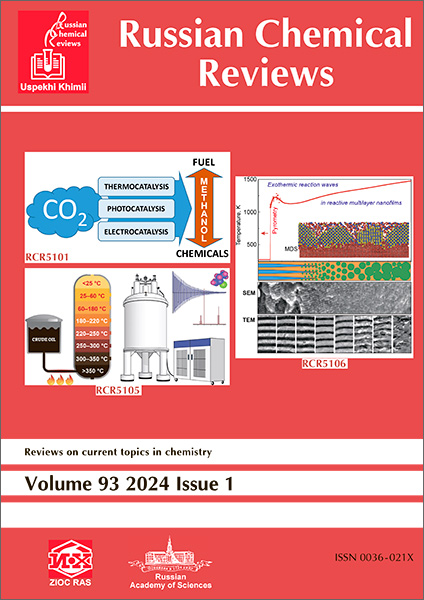Analysis, classification and remediation of defects in material extrusion 3D printing
IF 6
2区 化学
Q1 CHEMISTRY, MULTIDISCIPLINARY
引用次数: 0
Abstract
Additive manufacturing technologies (or 3D printing) have emerged as potent tools in the creation of a diverse array of objects, promising a paradigm shift in production methodologies across industries. However, the benefits of these technologies can be diminished by the use of suboptimal parameters or inferior materials, leading to defects that significantly degrade the quality and functionality of the resulting products. An incomplete understanding of defect formation keeps under the formulation of effective preventative strategies. In light of this, our review provides a comprehensive exploration of defects that arise during the Fused Filament Fabrication (FFF) — one of the most prevalent 3D printing methods. The defects are systematically classified according to several key characteristics, including size, type, mode of occurrence, and location. Each common defect is extensively discussed, detailing its external manifestation, root causes, the impact on the properties of printed parts, and potential preventative measures. Our findings unveil the complex interplay of material properties, printing parameters, and cooling dynamics in the defect formation process. This classification holds significant practical relevance, providing a solid foundation for the development of strategies for defect minimization and quality improvement in 3D printed products. It offers valuable insights for a broad audience, including researchers exploring additive manufacturing technologies, 3D printing engineers, 3D printer operators, and quality assurance (QA) engineers involved in production quality control. Furthermore, our review delineates the path for future research in this domain. There is a crucial need for the development of advanced machine learning and artificial intelligence models that can predict defect formation based on given printing parameters and material properties. Future investigations should also focus on the discovery of novel materials and refining of printing parameters to achieve superior quality of FFF 3D printed products. This review serves as a cornerstone for these future advancements, promoting a deeper understanding of defect formation and prevention in additive manufacturing.材料挤压3D打印缺陷分析、分类及修复
增材制造技术(或3D打印)已经成为创造各种各样物体的有力工具,有望在各个行业的生产方法中实现范式转变。然而,这些技术的好处可能会因使用次优参数或劣质材料而减少,从而导致显著降低最终产品的质量和功能的缺陷。对缺陷形成的不完全了解使我们无法制定有效的预防策略。鉴于此,我们的审查提供了熔丝制造(FFF)过程中出现的缺陷的全面探索-最流行的3D打印方法之一。根据几个关键特征,包括大小、类型、发生方式和位置,系统地对缺陷进行分类。每个常见缺陷都被广泛讨论,详细说明其外部表现,根本原因,对打印部件性能的影响,以及潜在的预防措施。我们的发现揭示了材料性能、打印参数和冷却动力学在缺陷形成过程中的复杂相互作用。这种分类具有重要的实际意义,为开发3D打印产品的缺陷最小化和质量改进策略提供了坚实的基础。它为广大受众提供了有价值的见解,包括探索增材制造技术的研究人员,3D打印工程师,3D打印机操作员以及参与生产质量控制的质量保证(QA)工程师。此外,我们的综述描绘了该领域未来研究的路径。目前迫切需要开发先进的机器学习和人工智能模型,这些模型可以根据给定的打印参数和材料特性预测缺陷的形成。未来的研究还应关注新材料的发现和打印参数的优化,以实现FFF 3D打印产品的卓越质量。这篇综述为这些未来的进步奠定了基础,促进了对增材制造中缺陷形成和预防的更深入理解。
本文章由计算机程序翻译,如有差异,请以英文原文为准。
求助全文
约1分钟内获得全文
求助全文
来源期刊

Russian Chemical Reviews
化学-化学综合
CiteScore
13.00
自引率
5.20%
发文量
27
审稿时长
6-12 weeks
期刊介绍:
Russian Chemical Reviews serves as a complete translation of the esteemed monthly review journal Uspekhi Khimii, which has been a prominent figure in Russian scientific journals since its establishment in 1932. It offers comprehensive access to the advancements made by chemists from Russia and other former Soviet Union countries.
Established in 1932, Russian Chemical Reviews is committed to publishing timely and significant review articles encompassing various facets of modern chemistry, including chemical physics, physical chemistry, computational and theoretical chemistry, catalysis, coordination chemistry, analytical chemistry, organic, organometallic, and organoelement chemistry, chemistry of macromolecules, applied chemistry, biochemistry, bio-organic chemistry, biomolecular chemistry, medicinal chemistry, materials chemistry, nanochemistry, nanostructures, and environmental chemistry.
 求助内容:
求助内容: 应助结果提醒方式:
应助结果提醒方式:


